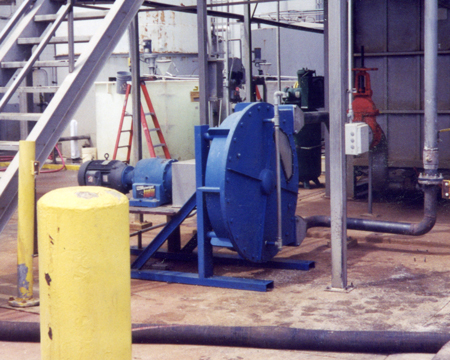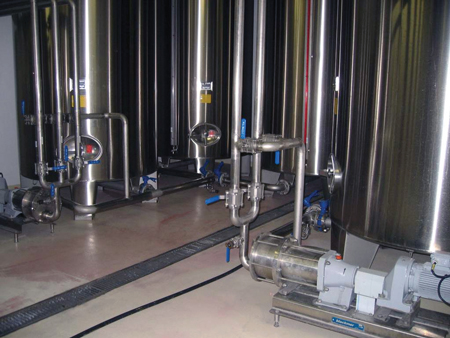Many factors must be considered before choosing the proper pump for a specific application.
Editor's Note: This is the second in a two-part series. For part one of the series, click here.
Part One of this series (Pumps & Systems, January 2010) discussed the requirements of each application that must be considered before choosing a pump. Air-operated double-diaphragm, metering and sliding vane pumps were discussed previously. Two other positive displacement (PD) pumps to consider are peristaltic (hose) pumps and eccentric disc pumps.
Peristaltic Pumps
The design and operational characteristics of peristaltic pump technology make it a wise choice in a wide range of applications—from moving viscous and/or abrasive slurries to the transfer of water-thin, non-lubricating fluids, corrosive chemicals and sheer-sensitive materials. These characteristics make peristaltic pumps ideal for diverse applications in the wastewater treatment, chemical and food industries.
Peristaltic pumps satisfy the requirements of a wide range of applications because their operation is based on the alternating contraction and relaxation of the hose. This forces the contents to move through the pump and into the discharge piping. A smooth-wall, flexible hose is fitted in the pump casing and is squeezed between shoes on the rotor and inside the pump casing. This rotating action moves the product through the hose at a constant rate of displacement.
The hose restitution after the squeeze produces an almost full vacuum that draws the product into the hose from the intake piping. The pump casing is lubricated to cool the pump and lengthen the service life of the shoes and hose. Since the product only contacts the hose and not the internal pump components, this pumping technology is a good choice for abrasive and corrosive applications.
This pump style also maintains excellent volumetric consistency, making it ideal for dosing applications. The seal-free design allows for dry-run capability and eliminates any potential leak or contamination points while providing superior suction lift. Finally, peristaltic pumps are easy to operate and maintain. The pump's reversible operation allows for pumping in both directions.
Eccentric Disc Pumps
The design of eccentric disc pumps allows them to be used in a wide scope of fluid-transfer applications—which is the hallmark of PD pump technology—from viscous to non-lubricating and volatile to shear-sensitive. Eccentric disc pumps are, therefore, a top choice for many industrial and sanitary applications including:
- Food processing
- Pharmaceutical
- Manufacturing
- Chemical processing
- Healthcare, cosmetic and soap products
- Paper coatings
- Solvents
- Polymers
- Petrochemicals
Eccentric-disc technology consists of a stationary cylinder and disc that are mounted to an eccentric shaft. As the eccentric shaft is rotated, the disc forms chambers within the cylinder, which increase at the suction port and decrease at the discharge port.
During operation, the discharge pressure exerts itself against the eccentric disc, preventing it from slipping. This low slip between the disc and cylinder gives eccentric disc pumps the ability to self-prime and line strip. With all these factors, this pumping principle allows for the gentle transfer of fluids from suction to discharge, with low agitation and shear.

An eccentric disc pump
The benefits of eccentric-disc technology for the operator include:
- Excellent self-priming capabilities, even when running dry
- The ability to maintain regular and constant output, even when the viscosity of the fluid changes considerably
- The pump's self-adjusting radial and axial design that gives it greater efficiency and repeatability over time
- Rugged reliability that allows eccentric pumps to maintain like-new performance levels without the need for excessive maintenance and equipment adjustments that can lead to downtime
Consider Energy Issues
While choosing the proper pumping technology for the specific application is the No. 1 concern for facility managers, that choice has been made more problematic in recent years with the increased awareness of energy consumption by manufacturing facilities—particularly in the pumping systems that are employed—and how it affects utility costs, profit margins and overall impact on the environment. “Green” is an essential part of the new bottom line for many manufacturers.
Pump design and operation can affect energy usage in a number of areas. If not properly monitored, they can lead to “energy creep” that results in unintended energy waste. In other words, making the most of energy and its efficient use is a never-ending challenge that plant managers and operators must confront on a minute-by-minute basis, 365 days of the year.
To optimize energy use while maintaining the expected production quotas, plant managers must not only select the proper pump for the application but put serious thought, time and effort into using the pumping technology that delivers the most energy-efficient option.
This means that many manufacturers are turning to corporate energy management (CEM) principles. These principles establish a set of parameters that move accountability for energy use to a firm's upper management. In the process, the principles create a marriage that involves all parties in a firm's hierarchy and a smoother approach to finding proper solutions to operational questions.
As manufacturers continue incorporating the CEM precepts into their operations, solutions to their energy-saving needs will be much easier to identify and implement. One of these solutions will be the reliance on PD pumps, which have a proven track record of being the most energy-efficient, thanks to their operational consistency.
Conclusion
Choosing the right pump is not as simple as grabbing the right bat or reading the proper textbook. It takes hours of study and an appreciation of the application's needs and the best way to meet them. This includes not only being familiar with the available pumping technologies but knowing which are the most efficient for the requirements. The solution must also be the most bottom-line and environmentally friendly. This type of decision is a delicate balancing act but one that must be mastered for a manufacturing application to operate at its most efficient and profitable level.
Pumps & Systems, February 2011
Tom Stone is the director of marketing for Blackmer®, based in Grand Rapids, Mich., an operating company within Dover Corporation's Pump Solutions Group (PSG™), Downers Grove, Ill. He can be reached at stone@blackmer.com. PSG is comprised of six leading pump companies—Wilden®, Blackmer, Griswold™, Neptune™, Almatec® and Mouvex®. You can find more information on PSG at www.pumpsg.com.

